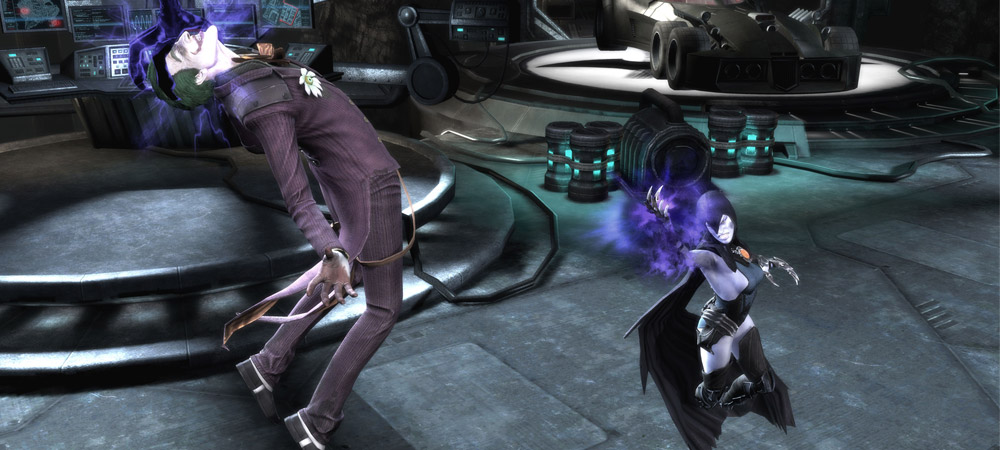Enviromental interactables can be shut off as well
So close, yet so far away! Injustice: Gods Among Us is one my most-awaited games this year. With just a few weeks left until release, Warner Bros. and NetherRealm invited us for one more look at the game’s last bells and whistles.
Injustice: Gods Among Us (PlayStation 3, Wii U, Xbox 360)
Developer: NetherRealm Studios
Publisher: Warner Bros.
Release: April 16, 2013
When I last saw the game, one of my biggest worries was that the stage interactables would break game balance. Thematically, superheroes knocking each others across the map makes sense, but the implications of what it could do to game balance was unsettling. Thankfully, NetherRealm has confirmed that you can easily turn them off from the stage select screen. If you fancy a certain part of the stage to, you can also select your starting position.
Surprisingly enough, tournament players seem to be reacting positively to them. Speaking with senior producer Adam Urbano, “I should mention we’ve had a lot of tournament players that specifically hated Mortal Kombat, and they’ve help us tweak and balance the game…come and play, and they loved the interactables, which really shocked me.”

To cover additional bases, Injustice is also being built with a self-patching feature. You may remember that all of the game’s frame data and damage values are displayed in the menu. “Without going through a full approval process through Microsoft and Sony, we can patch all the data value in this game,” Urbano continues.
“Stuff like damage done, frame inputs, lag delay — you name it, we can change it and have it live with only 24 hours’ notice to Sony and Microsoft.” It’s a method NetherRealm has done a few times recently with MK9, but Injustice will launch with this support.
Injustce now also has a progressive leveling system. A sort of replacement for the koin system of MK9, gaining levels is now your main source of gaining unlocks such as skins, concept art, and the like. You can gain XP a number of ways, ranging from winning fights, completing certain challenges, successfully landing supers, etc. You can also gain rank both online and off, though you get substantially more by playing online. It’s important to note too that this rank is entirely separate from your true skill rank, which determines your placement in ranked matches.
Pressing start now brings up a quick reference list. The list is a short compilation of easier-to-do moves and some super moves, but its real utility is in just how customizable it is. You can tag attacks from the full moves list on to your quick reference, and even display them during a fight. In game, the list is tucked away just below your health bar, so it’s not at all intrusive. And yes, the directional inputs adjust to your fighters position.

Finally, we got a peek at some additional single-player content. A follow-up to MK9‘s Challenge Tower, S.T.A.R. L.A.B.S. is a series of challenges centered on each playable character, bringing a final tally of 240 missions. To give you an idea of how different the missions are, the first we saw was a basic combat tutorial, with a three-star rank requiring a certain completion time, damage taken, and the like. The second had us controlling Isis (Catwoman’s cat) to make it past museum security. A three-star rating here required us to meow 25 times.
“That’s what happens when you’re still at work at 3:00am,” joked Urbano. If you manage to earn all 720 stars, NetherRealm is promising a really cool prize. I wouldn’t get too hyped for the prize as, lets face it, the alternate Millena costume was no pot of gold at the end of Challenge Tower.
All told, there is a lot of great stuff added here. The quick-patch feature is a much welcome addition, especially since we’re going to be hard at work breaking the game, and allowing interactables to be disabled is a comforting bit of leeway. Can’t wait to see how it all pans out.


